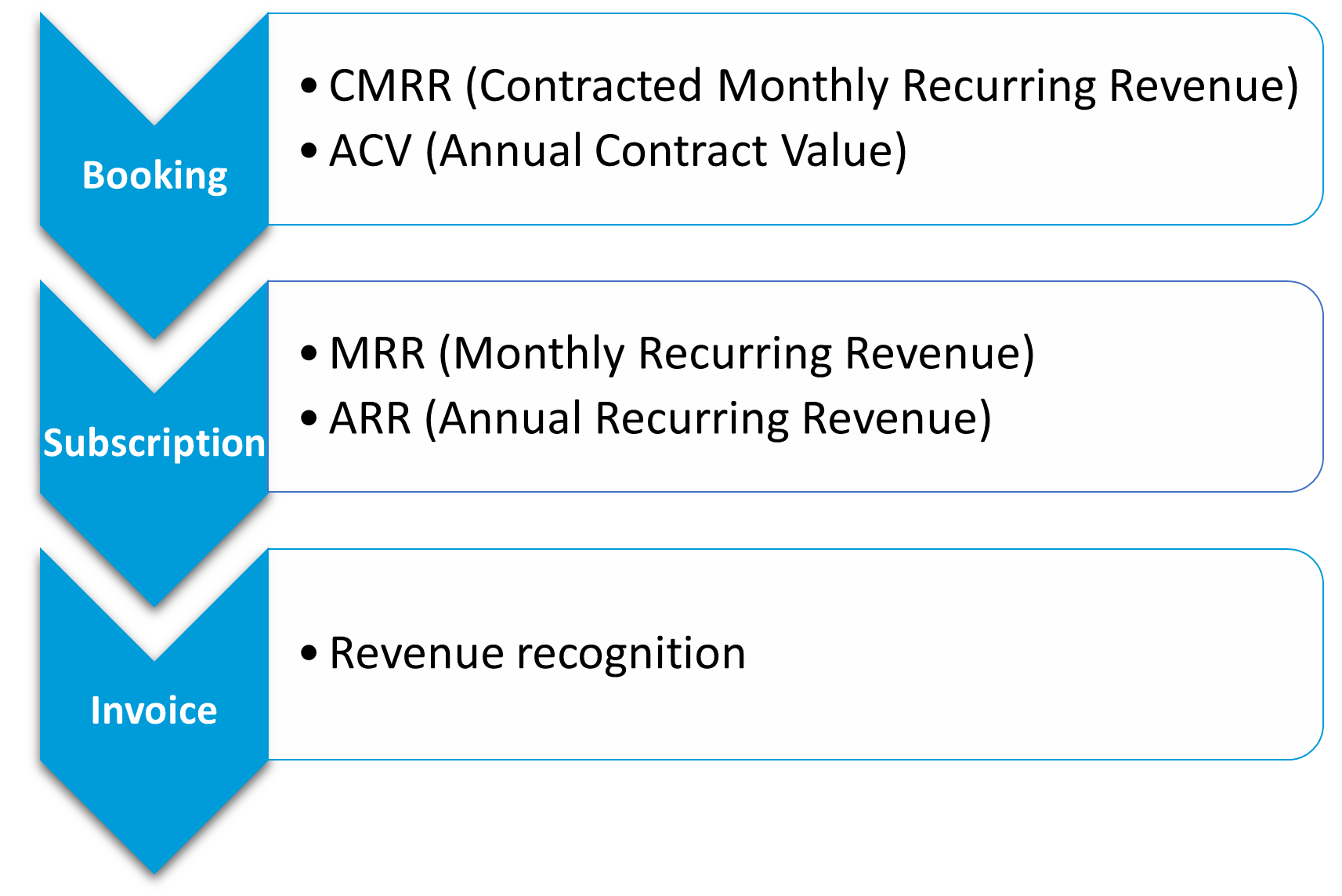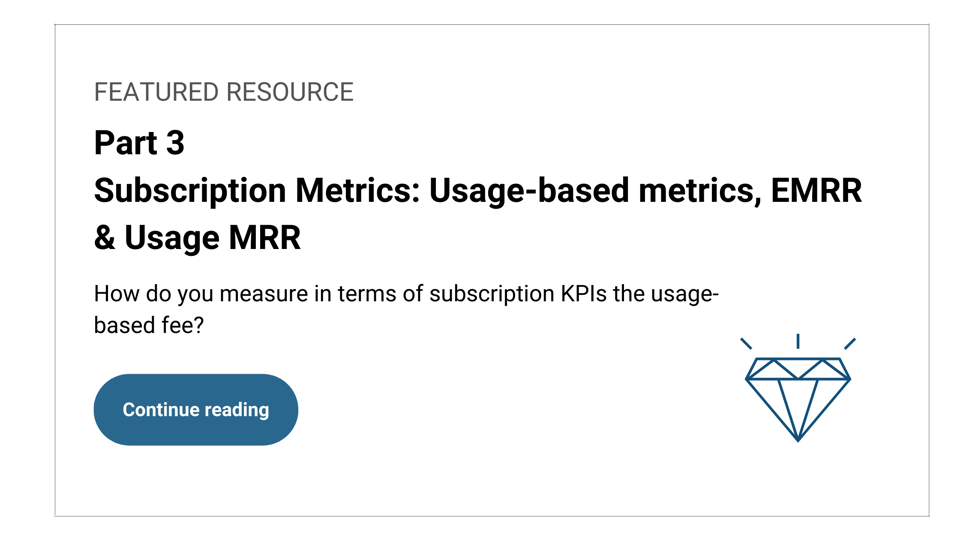Subscription Metrics Part 2: Difference between MRR & CMRR?
Understand SaaS subscription metrics, what's the difference between CMRR and MRR and why do they matter for a subscription business in our blog post.

Intro
As a company executive, there is often a need to look at the recurring revenue backlog to understand what the future holds. In this perspective, the CMRR/ACV (Contracted Monthly Recurring Revenue/Annual Contract Value) value is a good measure on the future since it removes any initial variations of the contract stack.
If we want a good measurement of what the near future will bring and be more close to the recognized revenue, eg. for the coming month, the MRR/ARR (Monthly Recurring Revenue/Annual Recurring Revenue would be a better measure since it's more detailed and includes the variations in between periods.
Because these metrics can create confusion and often mistakenly be interchanged in the subscription world, we have created this blog to hash out their differences and why they matter. Also check out our intro to subscription metrics article that covers recurring revenue and SaaS metrics in a more general sense.
CMRR (Contracted Monthly Recurring Revenue)
- We use CMRR to measure the monthly recurring revenue from a new contract or contract change and assume that it will be renewed, not canceled and that no contract changes will be made.
- CMRR is fueled by bookings, which are recordings of a contract event that affects the CMRR and other metrics. When a contract event happens, a booking is created of the new CMRR or the change in CMRR. A booking can be a new customer, expansion, contraction, or churn.
MRR (Monthly Recurring Revenue)
- We use MRR to measure the revenue every month according to the monthly price and the effective start & end dates on subscription charges (the actual revenue per month according to the monthly price).
- MRR is based on the subscription charge, meaning it is not directly related to bookings (but may change from contractual events that bookings record).

Example
- Contract date: 16th of February
- Effective start date: 1st of March
- Ramp-up: 500 EUR/m during 3 first months, 1000 EUR/m after that
MRR is bound by a monthly period from the effective start and end dates of the subscription charge and how the price differs over the months of the subscription. For this example, the MRR will be 500 EUR for March, April, May and 1000 EUR going forward after that.
CMRR is not bound by a period and will begin the month we contractually sign the new customer. It looks at what monthly price will be recurring 'forever' if no changes are made, thus, will regard the last monthly price in a ramp-up to be the CMRR. In this example, the 500 EUR/m is only for 3 months, so we could consider this as not really recurring as it has a specific end date, while the 1000 EUR MRR we know will be recurring 'forever' if no changes are made, so we will consider the CMRR being constant at 1000 EUR 'forever' until a contract event happens that affects the CMRR. As the contract date is the 16th of February in this case, we will then add our CMRR of 1000 EUR in February.
What if we look at these metrics on an annual basis?
Then we look at ACV and ARR.
ACV is the annual contract value, also driven by bookings and measuring what will be the annual recurring revenue for this contract with the same behavior as CMRR. Basically the monthly price times twelve. In this case, ACV is 12 000 EUR.
ARR is the annual recurring revenue looking 12 months ahead in time from the month we are looking at. So for example, if we look at the ARR from March 1st, we have: 10 500 EUR (500*3 for the first 3 months + 1000*9 for the following 9 months = 1500+9000=10 500 EUR)
Metric summary of this subscription example

What if a contract change is made?
Change example: the customer is very happy with the service so they want to add an additional feature to their plan for 500 EUR/m, they requested this on the 18th of August and will effectively be charged from the 1st of September.
We will then experience an increase in CMRR to 1500EUR in August, and the MRR will shift to 1500 EUR in September. The ACV will now be 18 000 EUR and if we retrospectively look at the ARR at the same month as the effective contract start (in March) we now have an ARR of 13 500 EUR (500*3+1000*3+1500*6=13 500 EUR).
Metric summary after contract change

Summary
As you can see, CMRR/ACV and MRR/ARR are two very useful metrics with different purposes and perspectives to measure how your business is doing. The example we used is just one of many scenarios that can affect these metrics. We have not touch on, for example, changes effective within months, usage- & measurement-based subscription charges, price adjustments, and one-off fees that have different impacts on these metrics, and also open up needs for using more related metrics such as Estimated Monthly Recurring Revenue and Total Contract Value. Understand your metrics better, give us your case and we will look into it, book a meeting with our subscription expert and start growing you SaaS business.
Business vector created by vectorjuice - www.freepik.com
